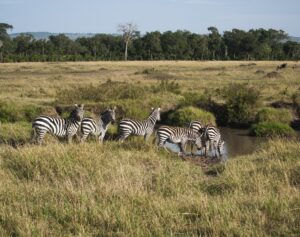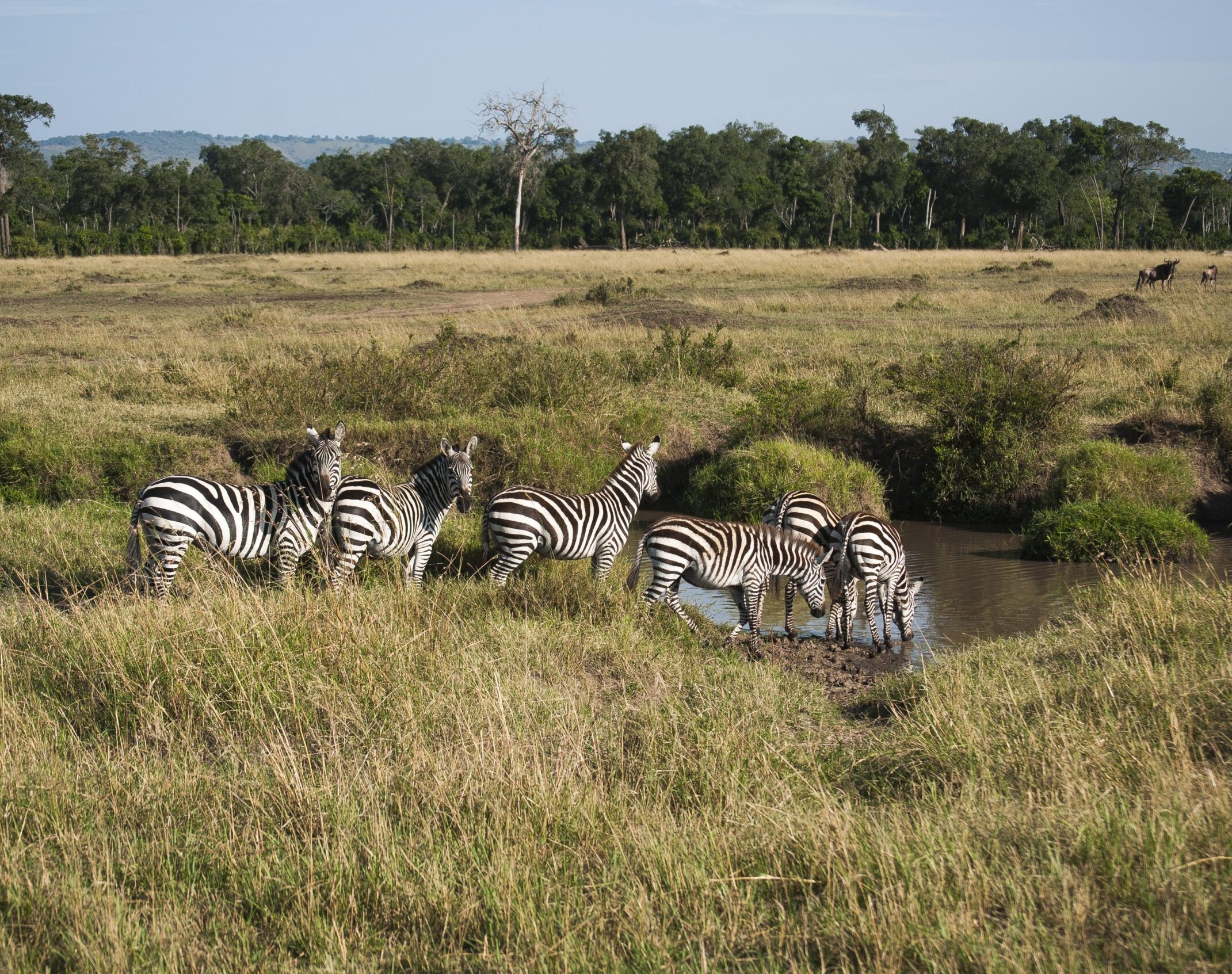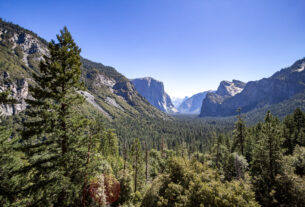Ecosystems are intricate networks of living organisms and their physical environment, interacting in complex and dynamic ways to sustain life on Earth. From the lush, diverse rainforests to the arid, resilient deserts, ecosystems provide essential services and support a remarkable array of life forms. Understanding the fundamentals of ecology—the study of these interactions and the principles governing ecosystems—is crucial for grasping how nature functions and how human activities impact the environment.
At the core of ecological study are the concepts of ecosystem structure and function. Ecosystems are composed of biotic components, such as plants, animals, and microorganisms, as well as abiotic factors like sunlight, water, and soil. These components interact through processes like energy flow, nutrient cycling, and ecological succession, shaping the dynamics of ecosystems and influencing their stability and resilience. By delving into these basics, we can better appreciate the delicate balance of nature and the vital role ecosystems play in supporting life on our planet.
(pxhere.com)
Ecosystem Structure
An ecosystem’s structure is a complex web of interactions among biotic (living) and abiotic (non-living) components. Understanding these elements is crucial to grasp how ecosystems function and sustain life. The biotic components include various organisms such as plants, animals, fungi, and microorganisms. Each of these organisms plays a unique role within the ecosystem, contributing to the overall functionality and stability of the system. For example, plants and algae, as primary producers, convert sunlight into chemical energy through photosynthesis, forming the base of the food web. This process not only sustains the producers themselves but also supports all other organisms that rely on them for energy.
In contrast, abiotic components are the non-living elements that significantly influence the ecosystem’s functioning. These include sunlight, water, soil, and temperature. Sunlight provides the energy necessary for photosynthesis and drives climate and weather patterns. Water is vital for all life forms, affecting growth, reproduction, and metabolic processes. Soil offers nutrients and support for plant growth, with its composition influencing the ecosystem’s productivity. Temperature impacts metabolic rates and species distribution, with different ecosystems adapted to varying temperature ranges. Together, these abiotic factors interact with biotic components to create a balanced and dynamic ecosystem.
(Biotic Components)
Producers such as plants and algae are fundamental to ecosystems as they perform photosynthesis, converting sunlight into chemical energy stored in glucose. This process forms the base of the food web, providing energy not only for the producers themselves but also for all other organisms in the ecosystem. Algae, which perform photosynthesis in aquatic environments, contribute significantly to primary production in oceans, rivers, and lakes, making them crucial for aquatic ecosystems.
Consumers include herbivores, carnivores, and omnivores, which obtain energy by consuming other organisms. Herbivores feed directly on producers, transferring energy up the food chain. Carnivores prey on herbivores or other carnivores, while omnivores have a varied diet that includes both plant and animal matter. Each level of consumers plays a role in controlling population sizes and energy flow within the ecosystem. Decomposers, such as bacteria and fungi, break down dead organic matter and recycle nutrients back into the soil. This process is essential for maintaining soil fertility and ecosystem health, as it makes nutrients available for uptake by plants.
(Abiotic Components)
Sunlight is a primary abiotic factor that provides the energy required for photosynthesis and influences daily and seasonal patterns of biological activity. It drives climate and weather patterns by affecting temperature and atmospheric conditions. Without adequate sunlight, photosynthesis cannot occur, disrupting the energy flow within the ecosystem and affecting all life forms dependent on it.
Water is another crucial abiotic component that supports all forms of life. It influences physiological processes such as hydration, nutrient transport, and temperature regulation. The availability and quality of water affect the distribution and health of organisms within an ecosystem. For example, freshwater availability can determine the types of plant and animal species that can thrive in a particular area.
Soil provides a medium for plant growth, offering essential nutrients, water, and support for root systems. Soil composition, including factors like pH, texture, and mineral content, significantly affects plant health and the overall productivity of the ecosystem. Nutrient-rich soils support diverse plant life, which in turn supports a variety of animal species.
Temperature affects metabolic rates and the distribution of species within an ecosystem. It influences how organisms grow, reproduce, and survive. Different ecosystems are adapted to specific temperature ranges, from the cold tundra to the warm tropical rainforest. Changes in temperature can impact species distributions and alter the balance of ecosystems, highlighting the importance of temperature in maintaining ecological stability.
(Summary)
In summary, the structure of an ecosystem is defined by the intricate interplay between biotic and abiotic components. Each element, whether living or non-living, interacts with others to sustain the balance and functionality of the ecosystem. Understanding these interactions helps in appreciating the complexity of ecosystems and the importance of conserving them. The dynamic relationships between biotic and abiotic factors are crucial for maintaining the health and stability of our planet’s ecosystems.
Ecosystem Functions
(Energy Flow)
Ecosystems perform a variety of essential functions that support life and maintain environmental balance. One of the most fundamental functions is energy flow. Energy enters ecosystems primarily through photosynthesis, where plants and algae convert sunlight into chemical energy stored in glucose. This process forms the base of the food web, providing energy for all other organisms. As herbivores consume plants, they transfer this energy to themselves, and the energy is then passed to carnivores that eat herbivores. Each trophic level in the food chain experiences a loss of energy, primarily as heat, due to metabolic processes. This energy loss means that higher trophic levels, such as apex predators, have less available energy compared to primary producers, highlighting the efficiency of energy transfer and the limitations imposed by each level’s energy loss.
The efficiency of energy transfer through trophic levels has significant implications for ecosystem productivity and structure. Producers, as the initial source of energy, support the entire food web, but only a fraction of this energy is passed to the next level. This energy loss limits the number of trophic levels an ecosystem can support and influences the structure and dynamics of food webs. Additionally, the energy flow through an ecosystem affects population dynamics and species interactions, emphasizing the importance of understanding these processes for effective ecosystem management and conservation.
(Nutrient Cycling)
Another crucial function is nutrient cycling, which involves the movement and transformation of essential nutrients like carbon, nitrogen, and phosphorus between the atmosphere, soil, and living organisms. These nutrients are vital for the growth, reproduction, and survival of organisms. In ecosystems, nutrients are cycled through various processes, including uptake by plants, consumption by herbivores, and decomposition by microorganisms. Decomposers, such as bacteria and fungi, play a vital role in breaking down dead organic matter and recycling nutrients back into the soil. This process ensures that nutrients are continuously available for plant uptake, maintaining ecosystem productivity and stability.
Nutrient cycling also affects soil fertility and ecosystem health. By recycling nutrients, ecosystems prevent the accumulation of organic waste and ensure the efficient use of resources. Disruptions to nutrient cycling, such as through pollution or habitat destruction, can lead to imbalances and negatively impact ecosystem functioning. For instance, excessive nutrient input from agricultural runoff can lead to eutrophication, causing algal blooms and oxygen depletion in aquatic systems. Understanding nutrient cycling processes is essential for managing ecosystems sustainably and addressing environmental challenges.
(Habitats)
Habitats provided by ecosystems are crucial for supporting diverse life forms. They offer shelter, food, and breeding grounds, which contribute to high levels of biodiversity. Different ecosystems provide various types of habitats suited to the needs of different species. Forests, wetlands, and coral reefs are exemplary habitats with particularly high biodiversity. Forests offer a complex structure with various layers that provide niches for numerous plant and animal species. Wetlands serve as critical habitats for many migratory birds and amphibians, while coral reefs support an incredible variety of marine life, including fish, invertebrates, and algae.
The role of habitats in maintaining biodiversity extends beyond providing physical space. Habitats also contribute to ecological processes such as pollination, seed dispersal, and nutrient cycling. The destruction or alteration of habitats can lead to declines in species populations and disrupt ecosystem functions. For example, deforestation reduces habitat availability and impacts species that rely on forest ecosystems for survival. Protecting and restoring habitats is essential for conserving biodiversity and maintaining the ecological processes that support life.
(Climate Regulation)
Ecosystems also play a vital role in climate regulation on both local and global scales. Forests, for instance, significantly influence climate by absorbing carbon dioxide from the atmosphere during photosynthesis and producing oxygen. This process helps mitigate climate change by reducing the concentration of greenhouse gases, which are responsible for global warming. Forests act as carbon sinks, storing carbon in their biomass and soils, which helps to offset emissions from human activities. In addition, forests influence local climate patterns by regulating temperature and humidity through evapotranspiration.
Wetlands and mangroves also contribute to climate regulation through carbon sequestration and by influencing local weather patterns. Mangroves, with their dense root systems, trap and store large amounts of carbon in their soils, which helps reduce atmospheric carbon levels. Wetlands, such as peat bogs, also store carbon and play a role in regulating water cycles. The protection and restoration of these ecosystems are crucial for maintaining their climate regulation functions and addressing climate change. By preserving ecosystems and their functions, we can help mitigate climate impacts and support global environmental stability.
Interactions and Dynamics
(Biotic Interactions)
The interactions between biotic and abiotic components are fundamental to ecosystem dynamics, shaping the structure and function of ecosystems. Among the most significant biotic interactions are predation and competition. Predation involves one organism consuming another, playing a crucial role in regulating prey populations and maintaining ecological balance. For instance, predators can control the number of herbivores in an ecosystem, which in turn affects plant communities and the overall health of the ecosystem. This predator-prey relationship is essential for preventing any one species from dominating and for promoting biodiversity by supporting a variety of species at different trophic levels.
Competition arises when organisms vie for the same resources, such as food, water, or habitat. This interaction can lead to competitive exclusion, where one species outcompetes another, or niche differentiation, where species evolve to utilize different resources or habitats. For example, in a forest, plants competing for sunlight might grow taller or develop broader leaves to capture more light, which impacts the structure of the plant community and the animals that depend on it. This competition influences species distribution, abundance, and community composition, demonstrating how biotic interactions can drive ecological processes and shape the dynamics of ecosystems.
(Symbiotic Relationships)
Symbiosis includes various types of interactions that influence how species coexist and interact within ecosystems. Mutualism is a relationship where both species benefit, such as bees pollinating flowers while obtaining nectar. This relationship enhances reproductive success for plants and provides bees with food, highlighting the interdependence of species within ecosystems. Another type of symbiosis, commensalism, occurs when one species benefits while the other is unaffected. For example, birds nesting in trees gain shelter, while the trees remain largely unaffected. These interactions illustrate how species can co-evolve and adapt to their environments while forming complex ecological networks.
Parasitism represents a symbiotic relationship where one species benefits at the expense of the other. An example is tapeworms living in the intestines of animals, where the tapeworms obtain nutrients while harming their hosts. Parasitism can influence host population dynamics and affect community structure by impacting the health and survival of host species. Each form of symbiosis—mutualism, commensalism, and parasitism—plays a role in shaping ecological relationships, influencing species interactions, and driving evolutionary processes within ecosystems.
(Ecological Succession)
Ecosystems undergo natural changes over time through a process known as ecological succession, which describes how the structure of biological communities evolves. In the early stages of succession, a barren landscape, such as a newly formed volcanic island or a recently glaciated area, is initially colonized by pioneering species like lichens and mosses. These early colonizers can withstand harsh conditions and begin to alter the environment by breaking down rock and accumulating organic matter, which gradually creates more hospitable conditions for subsequent species.
As succession progresses, the ecosystem develops through a series of stages, eventually leading to a more complex and mature community, such as a mature forest. This progression involves the establishment of shrubs, grasses, and eventually trees, which create a stable and diverse ecosystem with rich biodiversity. Ecological succession highlights the dynamic nature of ecosystems, illustrating their capacity to recover, adapt, and evolve in response to environmental changes. Understanding this process is crucial for managing and restoring ecosystems, ensuring their resilience and sustainability over time.
Conclusion,
Understanding ecosystems and their underlying principles provides profound insights into the complexity and interdependence of the natural world. From the intricate web of biotic interactions to the critical roles of abiotic factors, every element within an ecosystem contributes to its overall function and health. Energy flow, nutrient cycling, and ecological succession are fundamental processes that drive the stability and productivity of ecosystems, highlighting their dynamic nature and resilience.
As human activities continue to impact natural environments, it becomes increasingly important to apply ecological knowledge to conservation and sustainable management practices. By recognizing the interconnectedness of ecosystems and the consequences of our actions, we can better protect and preserve the delicate balance of nature. Ultimately, a deeper understanding of ecology not only enriches our appreciation of the natural world but also empowers us to make informed decisions that support the long-term health and sustainability of our planet’s ecosystems.



